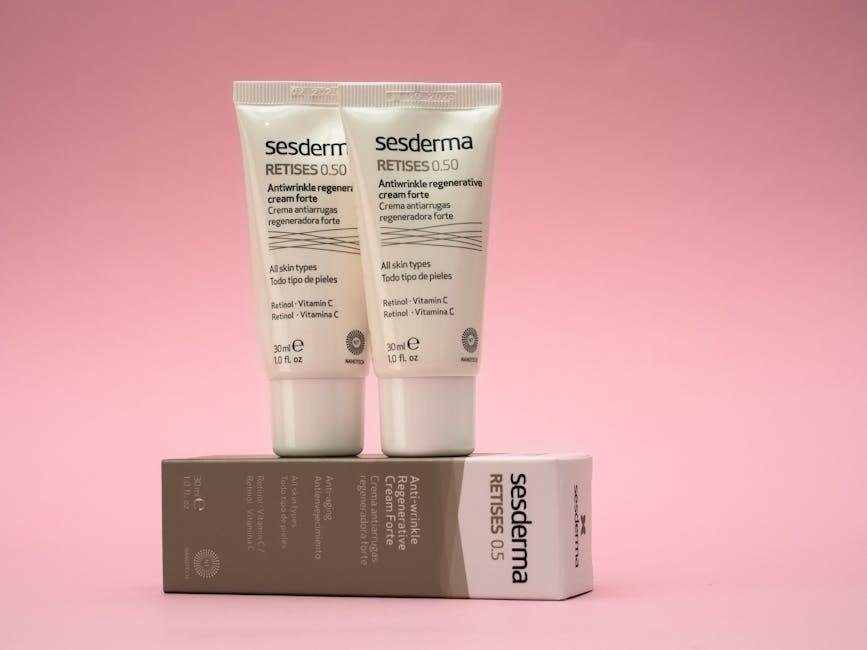In the ever-evolving landscape of skincare, the quest for that perfect, radiant glow often feels like navigating a complex maze. With an abundance of products vying for attention—serums, moisturizers, oils, and treatments—understanding how to layer them correctly can be as daunting as it is essential. Every product is a vital note in the symphony of skincare, and knowing the right order to apply them is key to achieving harmonious results. In this article, we’ll demystify the art of layering skincare products, guiding you through the principles and practices that ensure your skin receives the maximum benefit. Whether you’re a devoted beauty enthusiast or a newcomer in the world of skincare, preparing your complexion for the day or night ahead has never been more straightforward. LetS embark on a journey to unlock the secrets of effective skincare layering, transforming your routine into a personalized ritual that celebrates the beauty of your skin.
The Foundation of Layering: Understanding Skin Types and Concerns
Understanding your skin type is foundational for effective layering of skincare products. Different skin types, including oily, dry, combination, and sensitive, have unique characteristics that dictate the kind of products you should use and the order in which you apply them.for instance, oily skin benefits from lightweight, oil-free formulations that prevent clogged pores, while dry skin requires richer, hydrating ingredients to maintain moisture. Knowing your skin type enables you to tailor your skincare routine, enhancing the effectiveness of your products.
When considering skin concerns, such as acne, hyperpigmentation, or aging, it’s important to select specialized treatments that address these issues without overwhelming your skin. Here’s a concise overview of how to layer specific products based on common skin types and concerns:
| Skin Type/Concern | Recommended Layering Order | Key Ingredients |
|---|---|---|
| Oily | 1. Cleanser 2. Toner 3. Treatment 4. Moisturizer |
Salicylic Acid, Niacinamide |
| Dry | 1. Cleanser 2. Serum 3. Moisturizer |
Hyaluronic Acid, Ceramides |
| Combination | 1. Cleanser 2. Toner 3. Serum 4. Targeted Treatment |
Vitamin C, Retinol |
| sensitive | 1.Gentle Cleanser 2. Calming Serum 3. Lightweight Moisturizer |
Aloe Vera, Chamomile |
From Cleanser to Moisturizer: the Essential Order of Application
understanding the correct sequence for applying skincare products is crucial for maximizing their effectiveness. Start with a gentle cleanser to remove dirt, oil, and makeup. This prepares your skin to absorb subsequent products.Once your face is clean, proceed with a toner, if you use one; this helps balance the skin’s pH and can provide an extra layer of hydration. Following these steps, incorporate serums that target specific skin concerns such as fine lines, dark spots, or uneven texture, as these are formulated with active ingredients that work best when applied directly to clean skin.
After allowing your serums to settle, it’s time for moisturizer. This step locks in hydration and creates a protective barrier against environmental stressors. if you are applying skincare in the morning, don’t forget the essential step of using a sunscreen to shield your skin from harmful UV rays. To summarize the application order:
| Step | Purpose |
|---|---|
| Cleanser | Removes impurities |
| Toner | Balances skin’s pH |
| Serum | Targets specific concerns |
| Moisturizer | Locks in hydration |
| Sunscreen | Protects from UV damage |
Active Ingredients Unpacked: Harmonizing Potency and Consistency
understanding the active ingredients in your skincare products is essential to achieving the perfect balance between potency and consistency. Each ingredient plays a important role, and when combined correctly, they can enhance each othre’s effectiveness. Active ingredients can be categorized into various types, including antioxidants, exfoliants, and hydrators. By knowing their individual benefits, you can create a routine that not onyl addresses your specific skin concerns but also maintains overall skin health. Here’s a brief overview of some popular categories:
- Antioxidants: Fight free radicals and help reduce signs of aging.
- Exfoliants: Remove dead skin cells, promoting a smoother texture.
- Hydrators: Restore moisture and maintain skin barrier function.
When layering products, it’s crucial to consider the potency and compatibility of these active ingredients. Some ingredients, like retinol and vitamin C, can be effective in tandem but might necessitate a careful application strategy to prevent irritation. To assist with your layering process, the following table illustrates the best practices for combining active ingredients:
| Active Ingredient | Best Pairing | Application Tip |
|---|---|---|
| retinol | Moisturizers | Apply at night to limit sunlight exposure. |
| Vitamin C | Sunscreen | Use in the morning for enhanced protection. |
| AHAs/BHAs | Hydrators | Follow with a hydrating serum to prevent dryness. |
by thoughtfully considering the synergy between active ingredients, you can harmonize their potency and maintain consistency, ultimately leading to radiant and healthy skin.
Sealing the Deal: Techniques for Maximizing Hydration and Effectiveness
To achieve the ultimate moisture infusion for your skin, it’s essential to embrace a combination of techniques that maximize hydration while also ensuring your products work harmoniously with one another. Start with hydrating serums featuring ingredients like hyaluronic acid or glycerin. These powerhouses attract moisture and can be applied directly to damp skin for enhanced absorption. Following this, a light-weight, hydrating essence or toner can help further lock in that hydration. Gently pat your chosen essence onto your skin using your palms to encourage deeper penetration and increase blood circulation, enhancing the overall efficacy of your skincare routine.
Layering products correctly can significantly elevate their effectiveness. Consider the following steps for optimal results:
- Start with a clean canvas: Always cleanse thoroughly to remove impurities.
- Apply from thinnest to thickest: Start with watery formulations, moving toward creams and oils.
- Embrace occlusives: Finish with products that create a barrier, such as moisturizers or oils, to seal in hydration.
- Don’t forget SPF: During the day, the final layer should always include sunscreen to protect your skin.
| Product Type | Key Ingredients | Purpose |
|---|---|---|
| Cleanser | Glycerin,Aloe Vera | Removes impurities |
| Serum | Hyaluronic Acid,Vitamin C | Boosts hydration |
| Moisturizer | Ceramides,Shea Butter | Locks in moisture |
| sunscreen | zinc Oxide,Titanium Dioxide | Protects skin |
In retrospect
In the intricate dance of skincare,layering products correctly is an art form that transforms not just your complexion,but your entire approach to self-care. Each step, from cleansing to moisturizing, is a note in a harmonious symphony that plays the melody of healthy skin. Armed with the knowledge of what to apply and when, you can unlock the potential of each product, allowing them to work in synergy for optimal results.As you embark on your skincare journey, remember that patience is essential—great skin is a result of consistency and care. Pay attention to how your skin responds, and don’t hesitate to adjust your routine as needed. Just like a well-rehearsed performance, the best results often come from a bit of trial and error.
So, take a moment each day to indulge in your skincare ritual, celebrating the small victories that lead to vibrant, glowing skin. With the right layering techniques, you are not just applying products—you are nurturing your skin and reaffirming your commitment to self-love. Here’s to discovering your unique routine and the radiant skin that follows!



